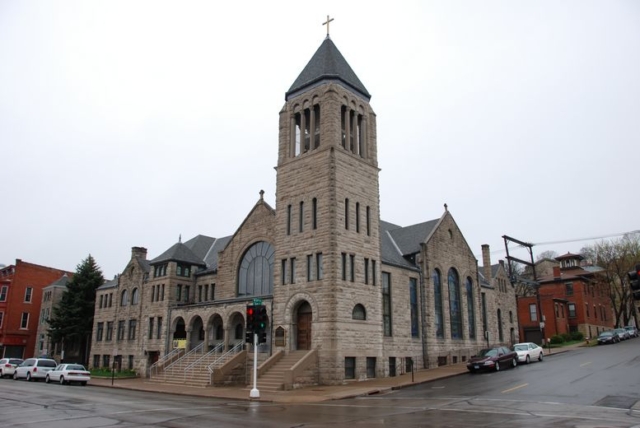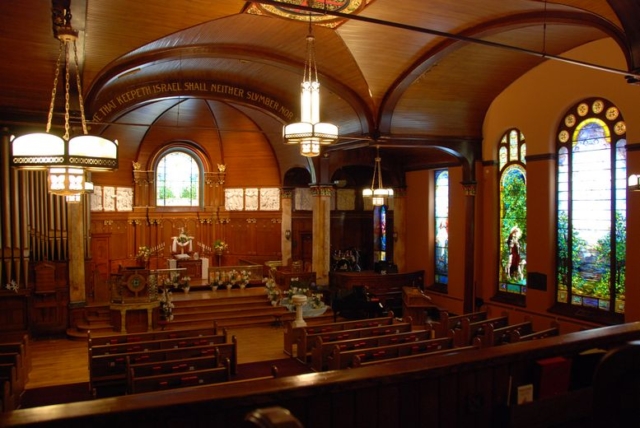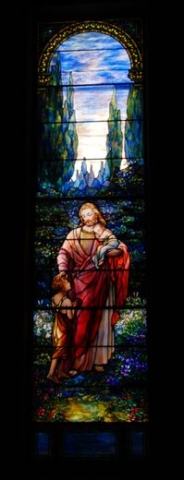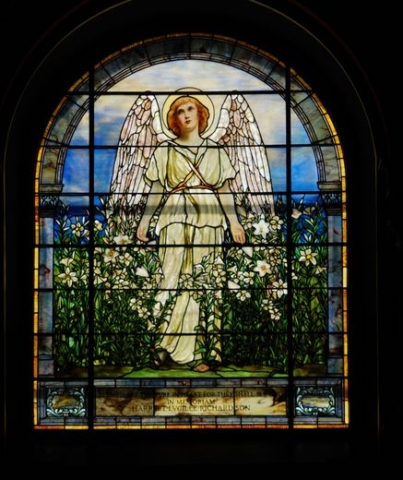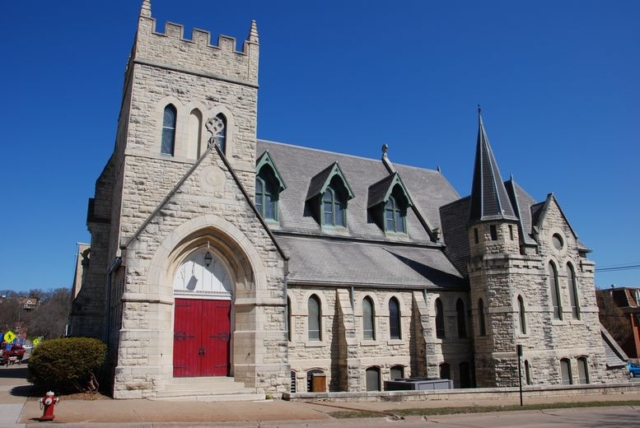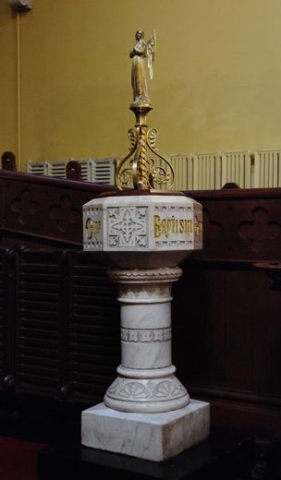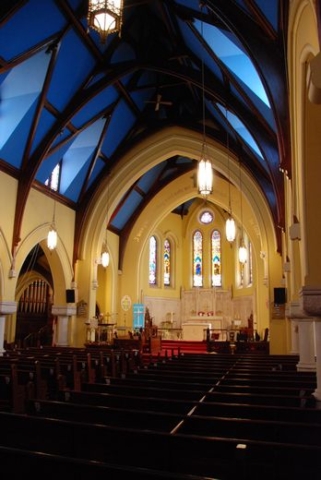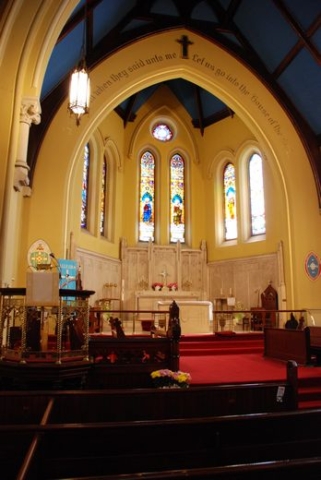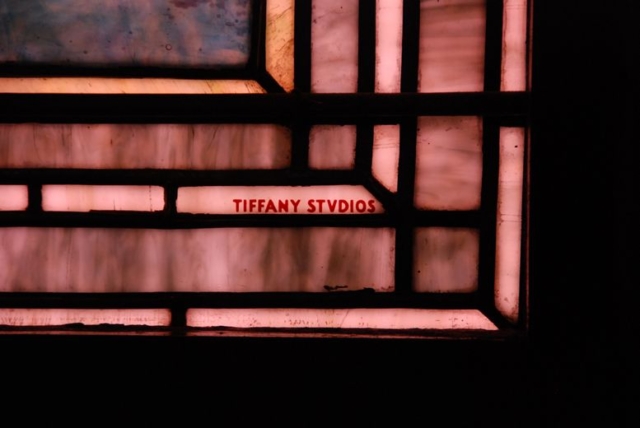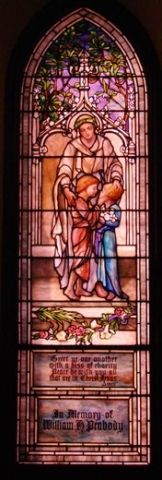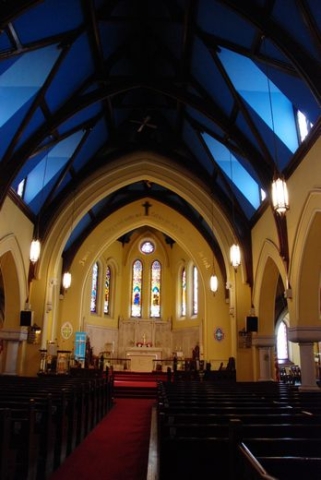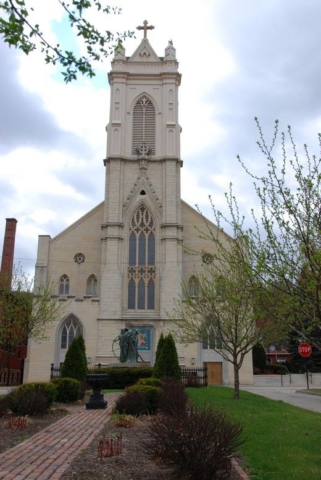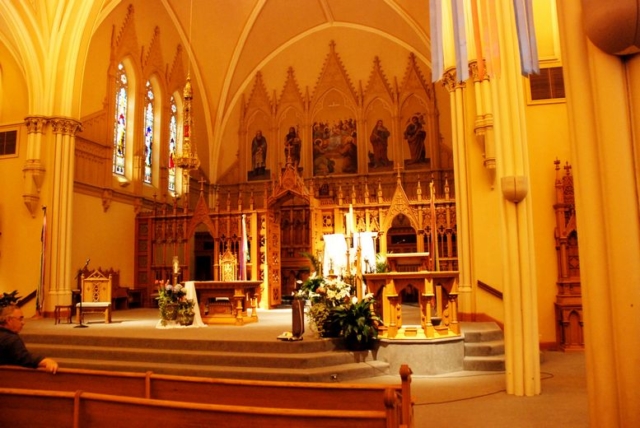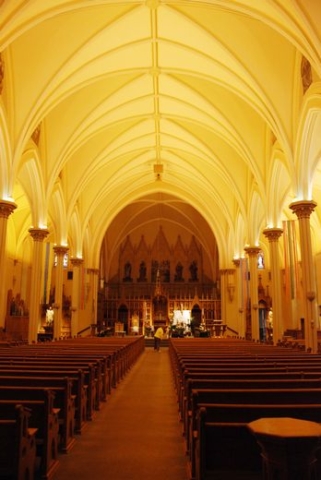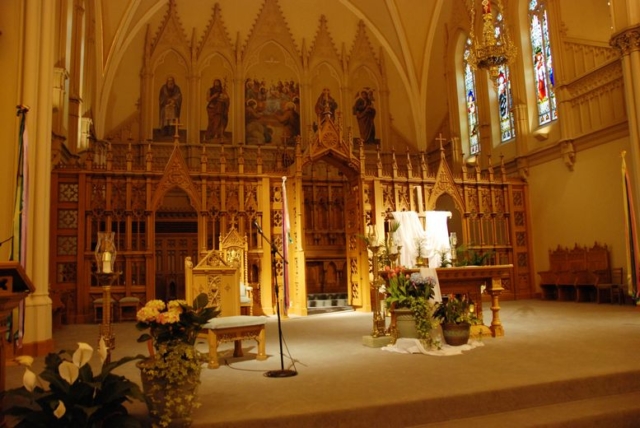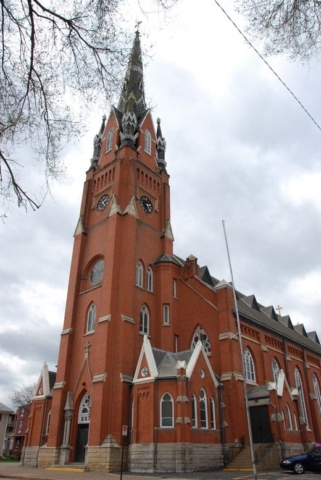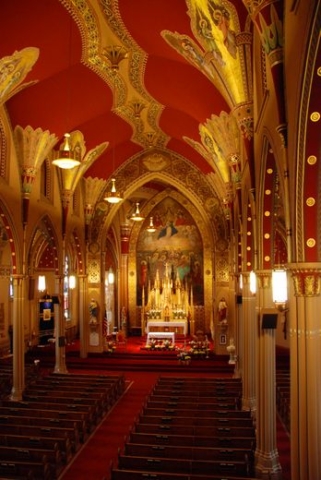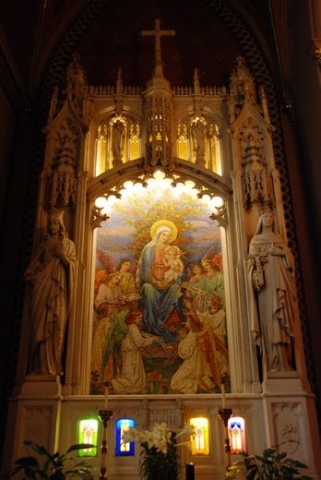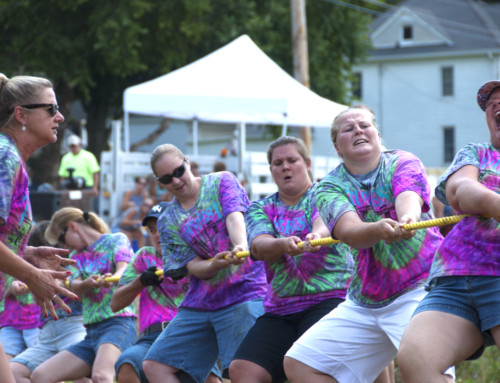Dubuque was once awash in cash—lots and lots of cash. From its early days as a center for lead mining through the remainder of the 19th century, Dubuque’s capitalists struck it rich and poured money into extravagant buildings to prove their worth. Fortunately for us, many of those buildings are still around, including four churches that would be treasures in a city much larger than modest Dubuque.
St. Luke’s United Methodist Church (1199 Main St.; 563.582.4543) is an exquisite, beautiful, sublime temple to God. The church has an astounding collection of Tiffany art glass windows: every window in the church—dozens of them—was crafted by Tiffany Studios save one (The Prodigal Son, installed in 1976). The windows, which span the range of Tiffany’s career, are eerily luminescent: intense, rich, and alive. The Good Shepard, on the north wall, was built for the 1893 Colombian Exposition, one of the events that catapulted Louis Comfort Tiffany into the limelight, and purchased by a St. Luke’s parishioner for the church. Although the windows are spectacular and deserve time to savor, don’t miss the craftsmanship in the rest of the church. Most of the wood is oak, including the quarter-hewn panels that comprise the vaulted ceiling. The sanctuary is delineated by a brass altar rail, defined by a pulpit of oak, brass, and marble, and accented with a white marble baptismal font. The congregation, Iowa’s oldest with roots back to 1833, spent $100,000 to build the Romanesque church; when the doors opened in 1897 the entire debt had been paid off.
St. John’s Episcopal Church (1410 Main St.; 563.556.0252) was founded in 1836, making it nearly as old as St. Luke’s. The current English Gothic building was finished in 1882. Like St. Luke’s, the interior of St. John’s is rich in detail and enhanced by a collection of resplendent art glass windows, including five made by Tiffany. Like many Christian churches, the ceiling was built to resemble the hull of a ship. In 1926, the original wooden altar was moved to the south chapel wall and replaced with an altar and reredos of Italian marble. The baptismal font was brought over from an earlier church building and dates to 1851. The exterior doors, painted red to symbolize the blood of early Christian martyrs and Christ, jumps out from the limestone exterior.
Catholic worship in Dubuque dates to the same period as St. Luke’s and St. John’s. The Dubuque Diocese was created in 1837; about a year after Father Samuel Mazzuchelli built the first stone church. In short order, however, Dubuque Catholics outgrew Mazzuchelli’s church and set out to build a new one. The Gothic Revival Cathedral of St. Raphael (231 Bluff St.; 563.582.7646; Mass: Sa 4:30, Su 7:30,10,5:30) was built between 1852 and 1859; the tower was not added until 1876. The bright interior is generally sparse in decoration but is ornamented with several frescoes executed by Luigi Gregori, mostly at the top of the arches along the nave, and art glass windows imported from London. In 1886, the church was subject to a major overhaul: windows and columns were lowered, new capitals were built and new groined vaulting was installed for the ceiling; and the choir loft was replaced with a wider but shorter version, opening up the nave. The basement of the Cathedral has a solemn Italian marble-lined mortuary chapel that was built in 1903 but off-limits to the public until 1997; it houses the remains of people important to the diocese, including a few bishops.
Where St. Raphael is simple and bright, St. Mary Catholic Church (1584 White St.; 563.582.5469) is elaborate and dark (but not oppressive). Completed in 1867 for a growing population of German Catholics, the building was designed by John Mullany, a well-known architect with a specialty in Gothic revival design who also designed the Cathedral of St. Raphael. The church and its steeple, the tallest in town at 252 feet, were modeled after the one at the Salisbury Cathedral (England). (I hope the steeple at St. Mary is better engineered; the one at Salisbury has been a maintenance headache for centuries.) The ceiling is painted a deep red and the vaulting decorated in gold. The mural of the Assumption behind the altar was painted by Matilda Brielmaier in 1912. The 35 foot tall piece of art was painted on three pieces of canvas in the artist’s studio, then installed in the church and finished. It was restored in 1943 after sections began to peel away. The Altar of St. Mary (west side aisle) was installed in 1928; it is made of Italian Carrara marble and has a mosaic of Mary created in Munich; it also houses the relics of four saints, including St. Anthony and St. Francis. Many of the art glass windows are the creation of Bavarian artist F.X. Zetteler. They were shipped from Munich in 1912, just ahead of the violence that triggered World War I. The windows depict key events in the life of Mary, beginning with her birth (west side window at the front) and ending with her death (east side window at the front).
© Dean Klinkenberg, 2009
